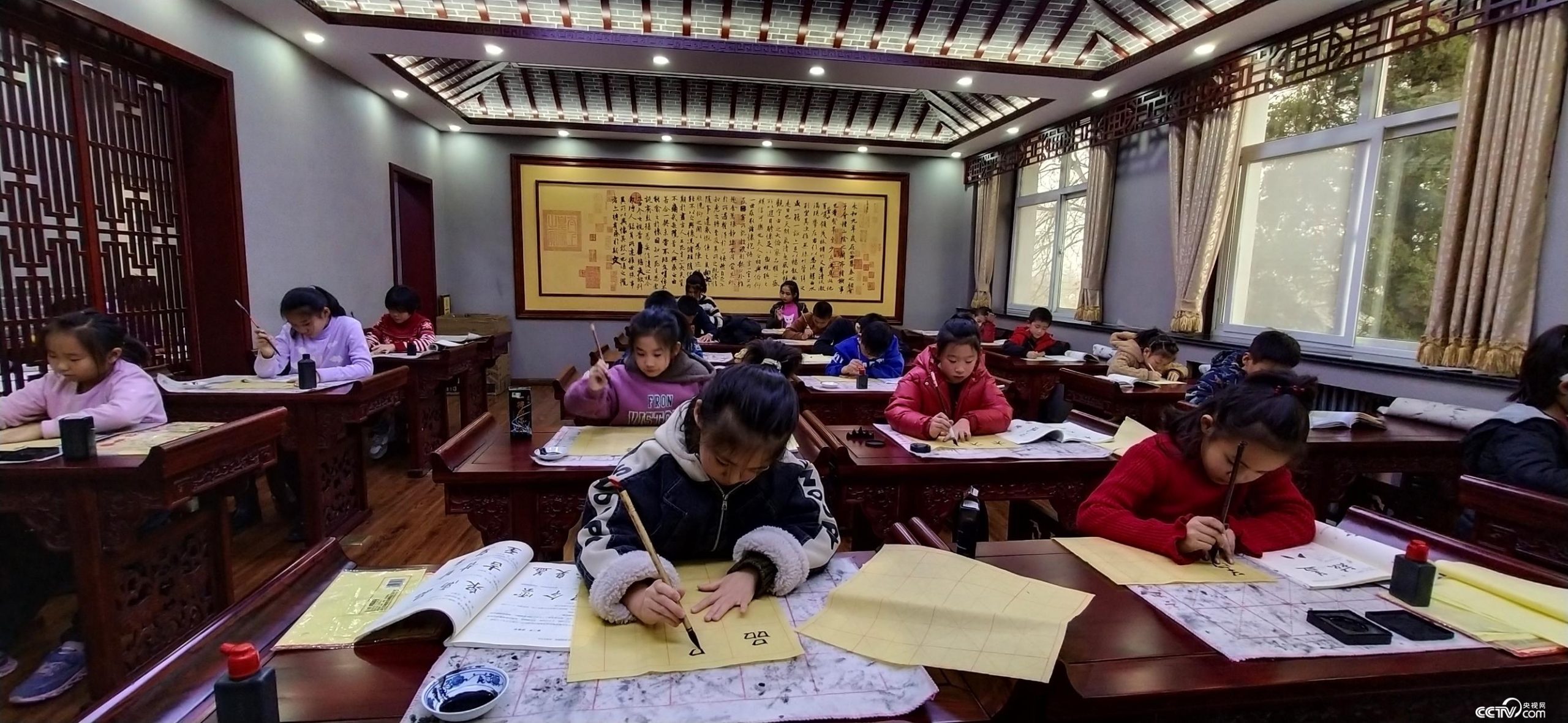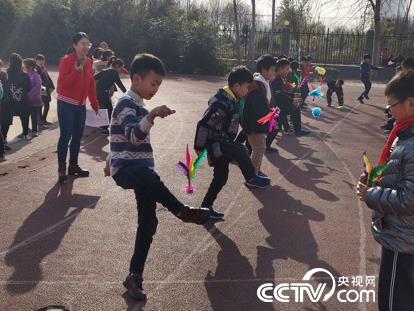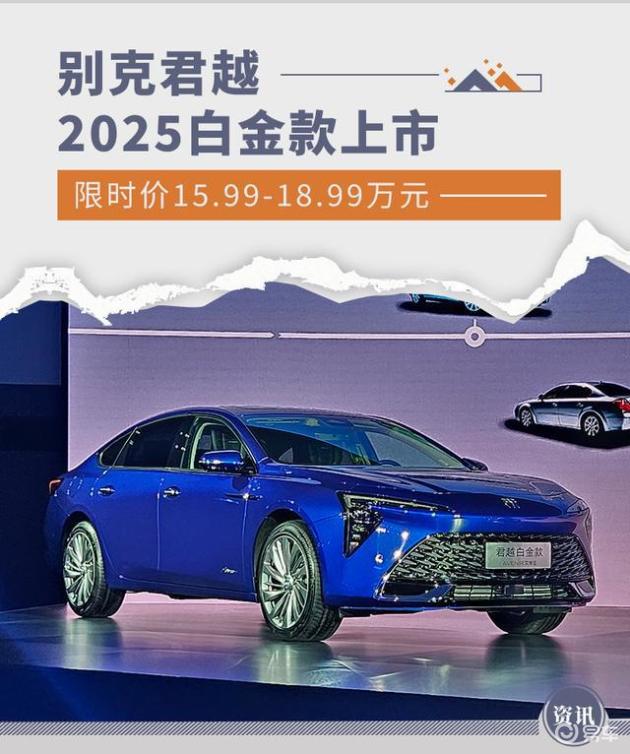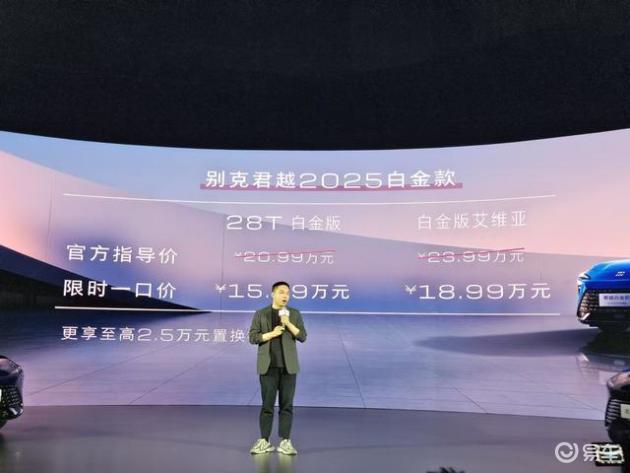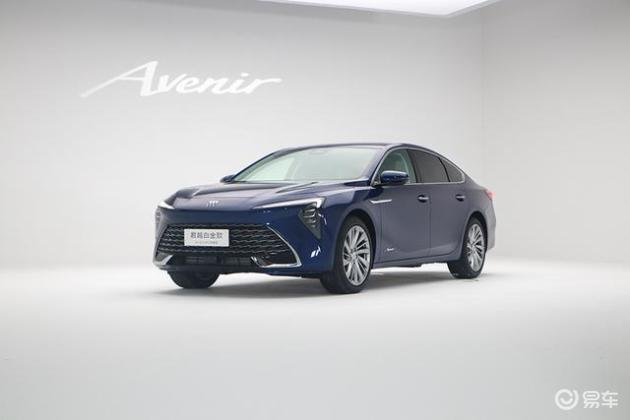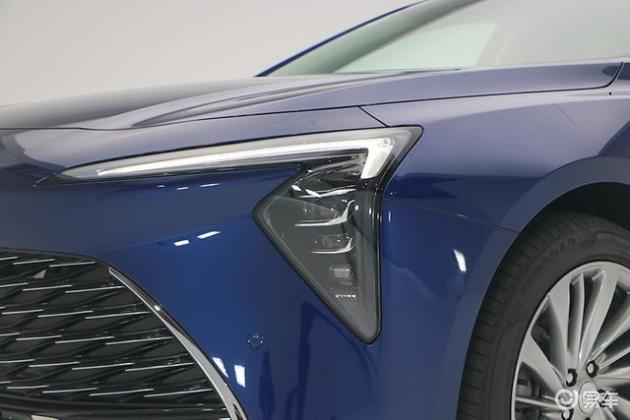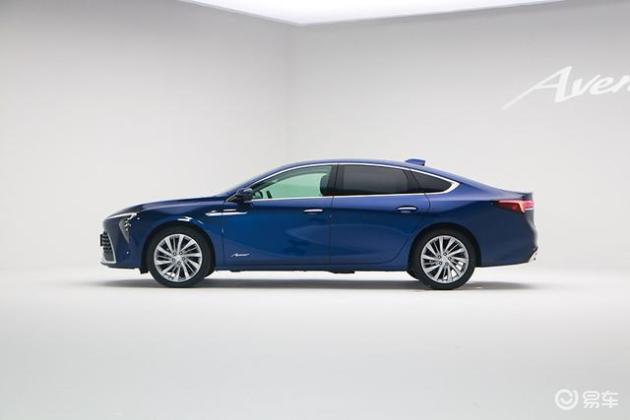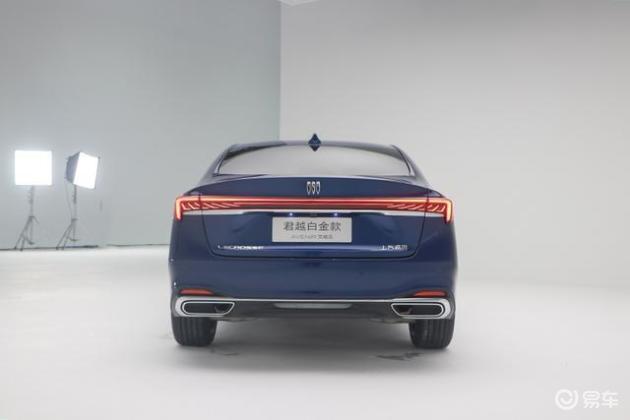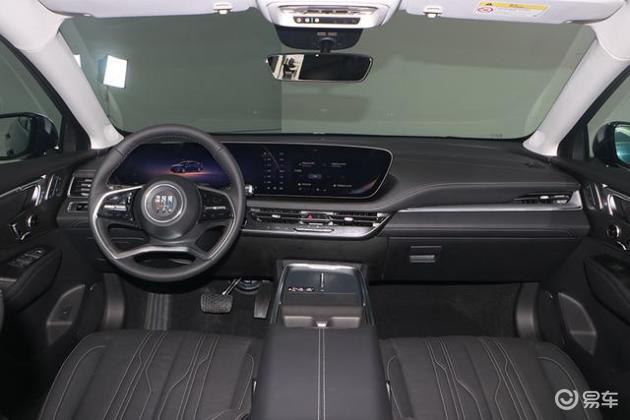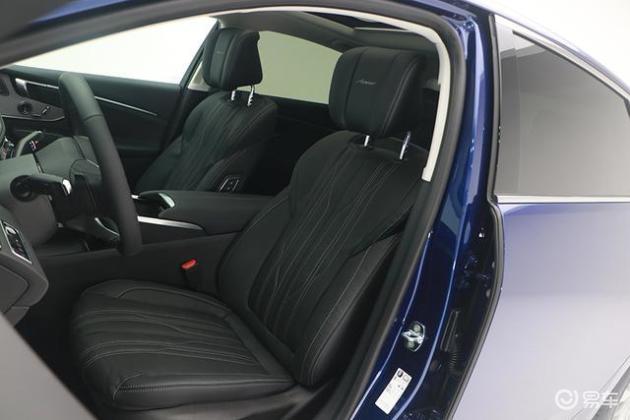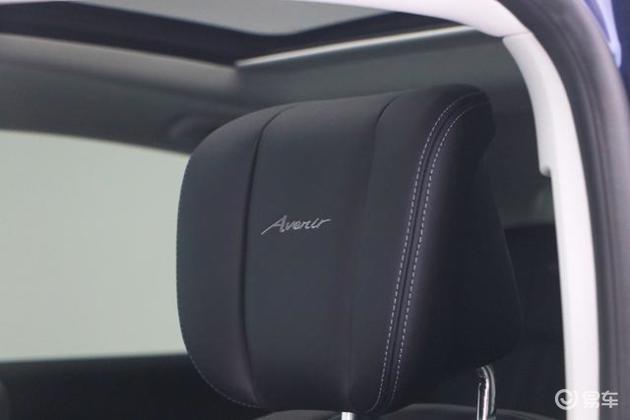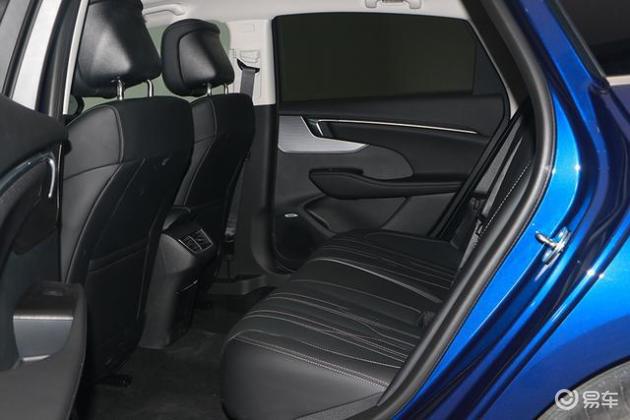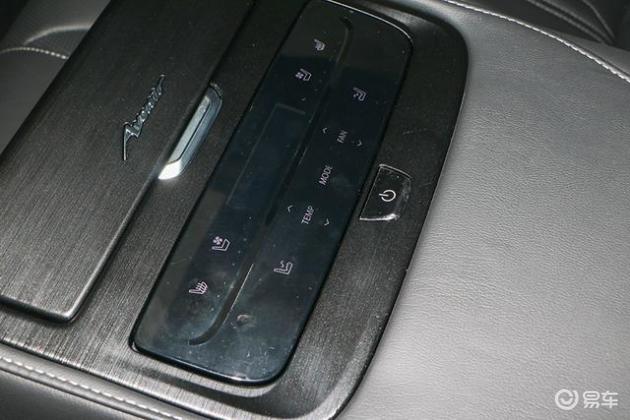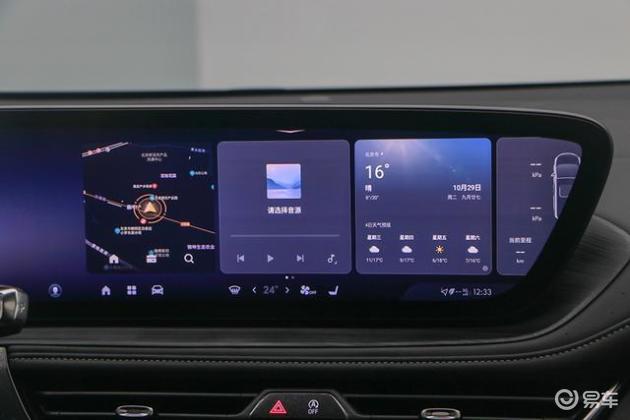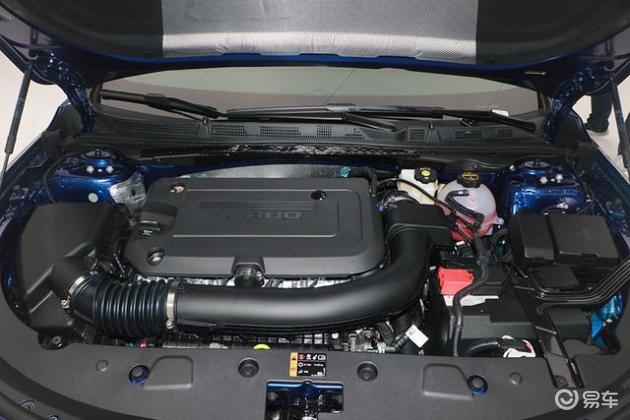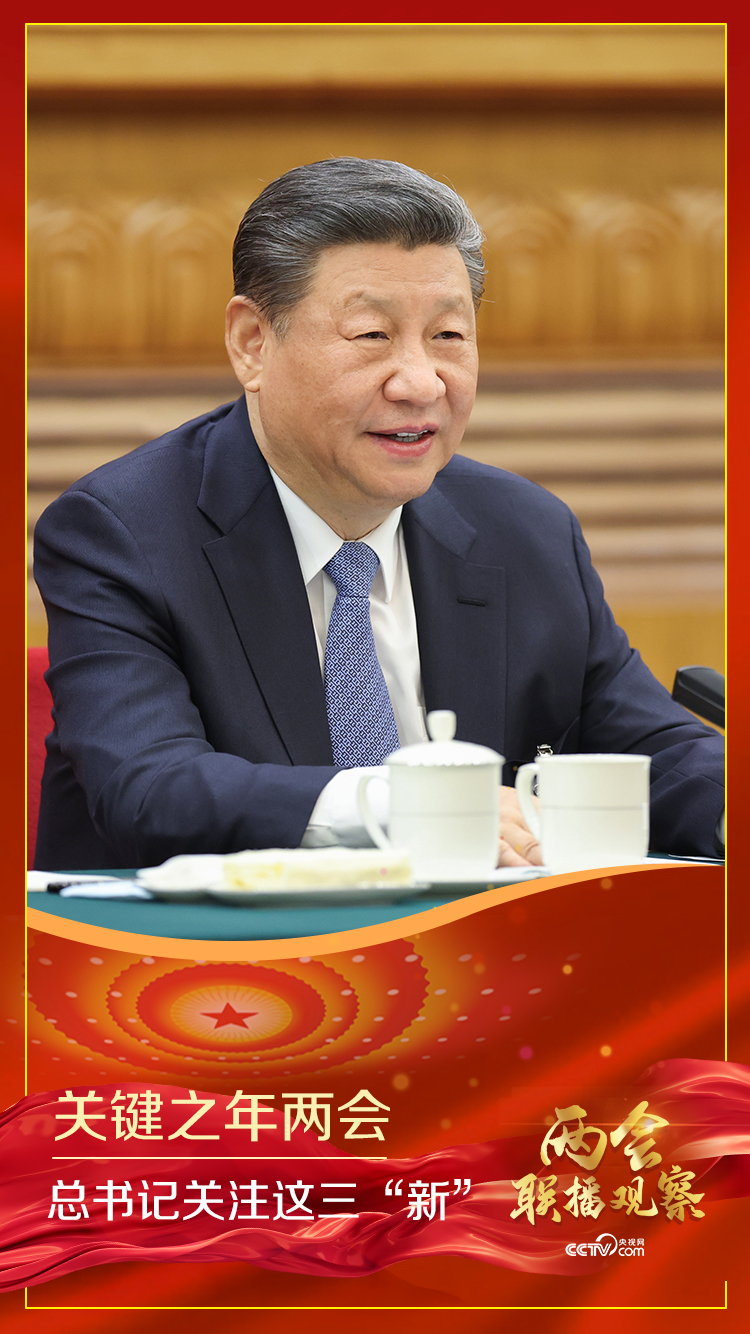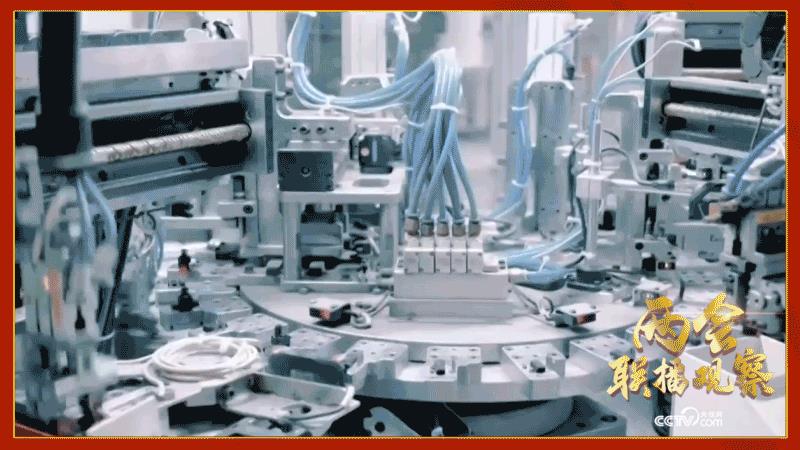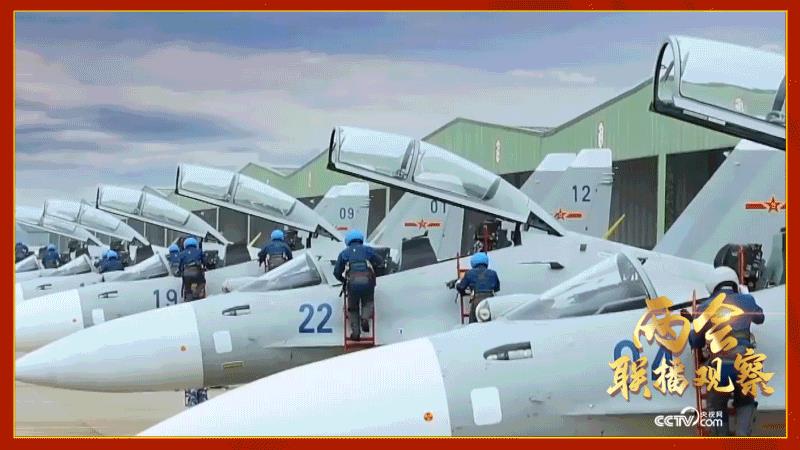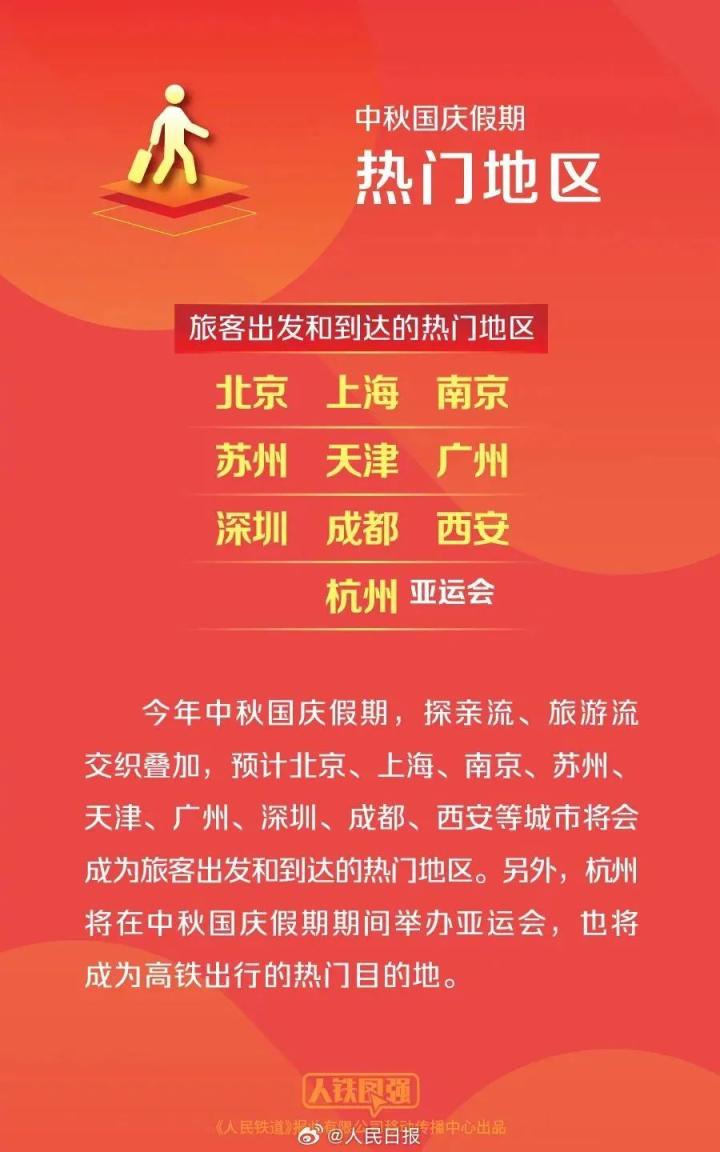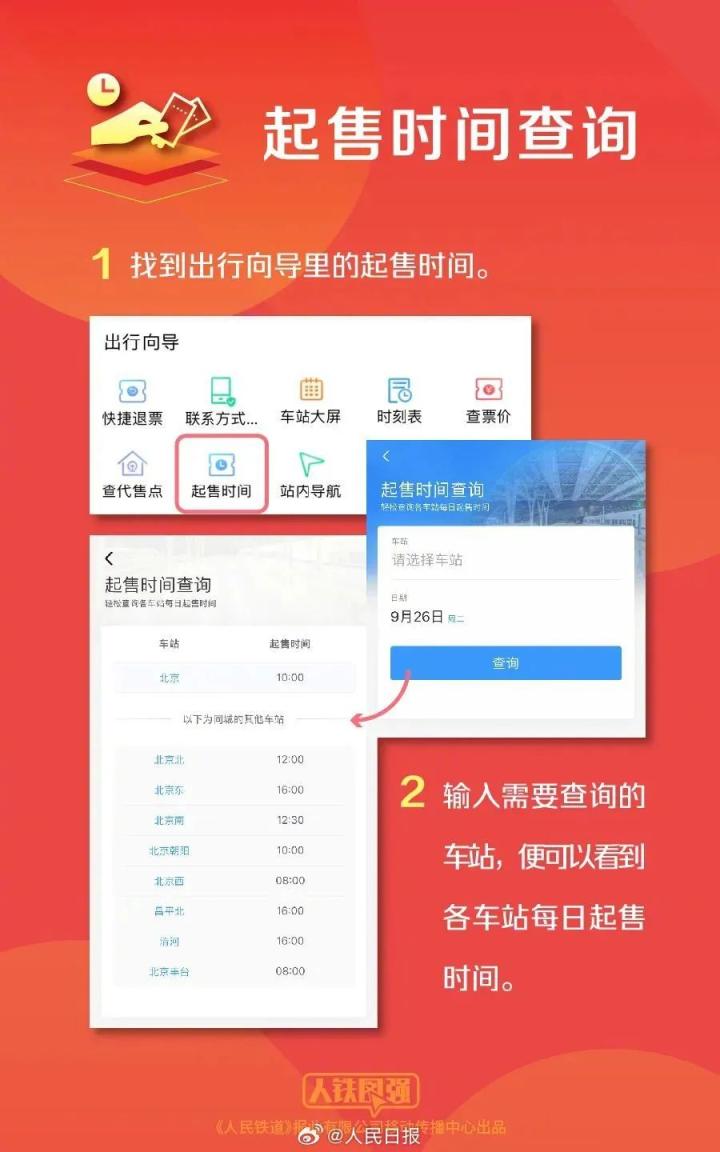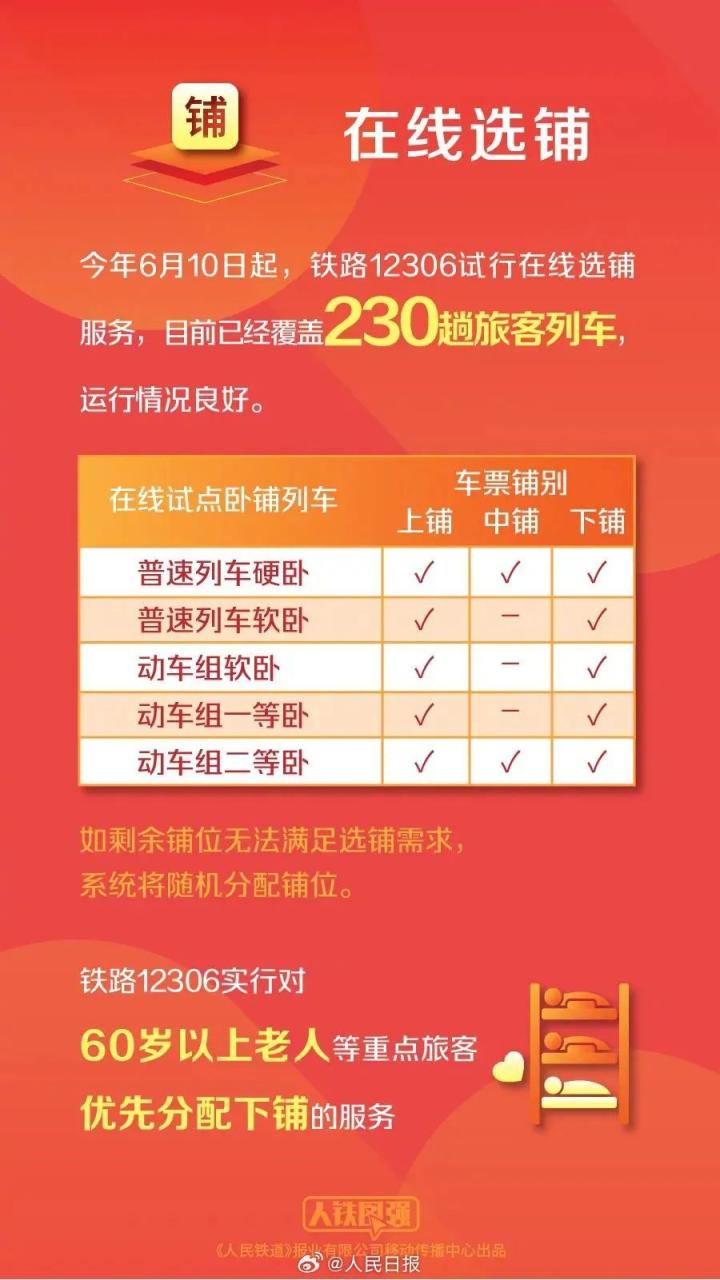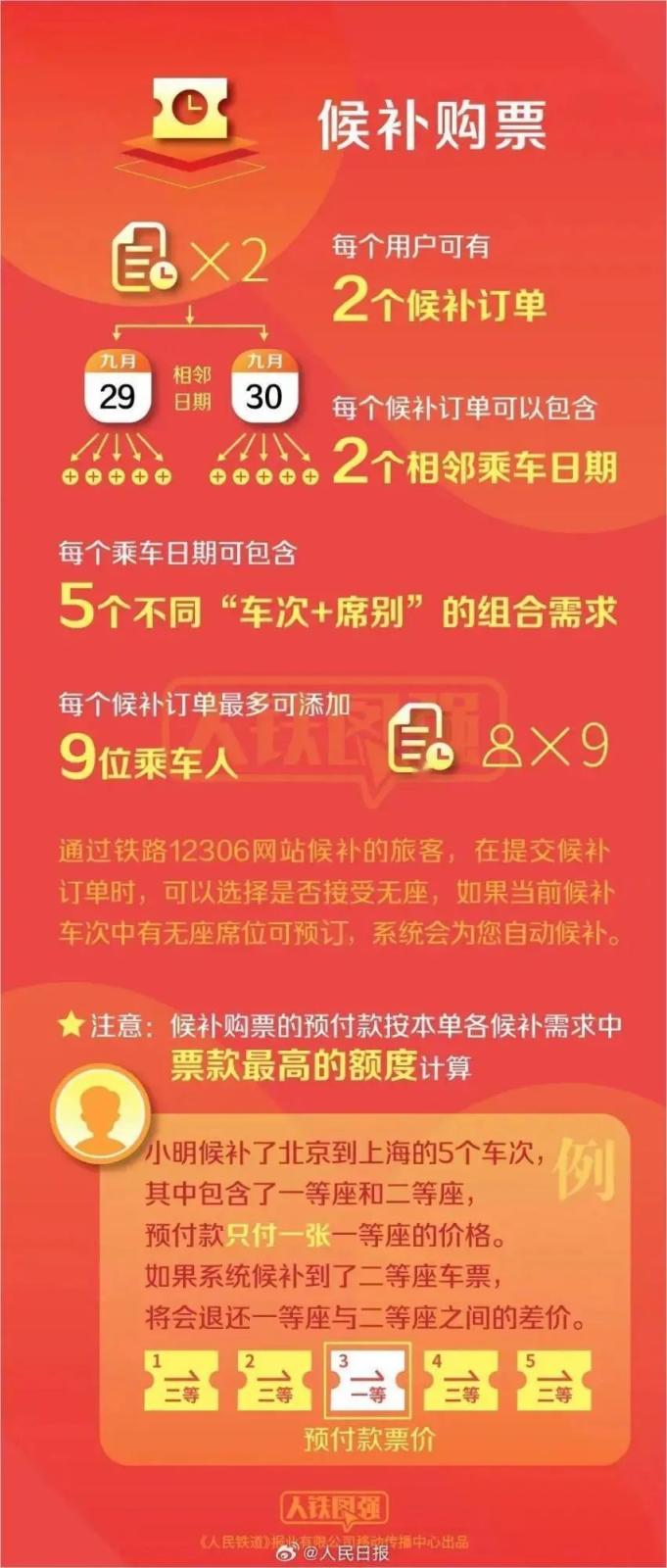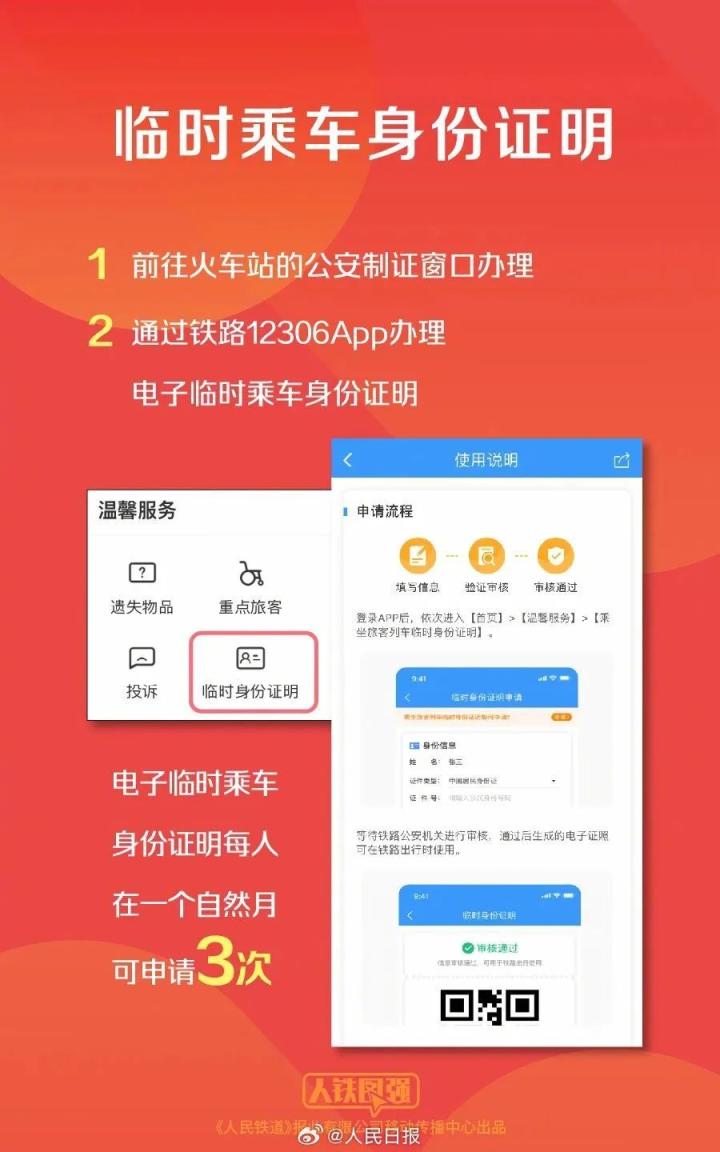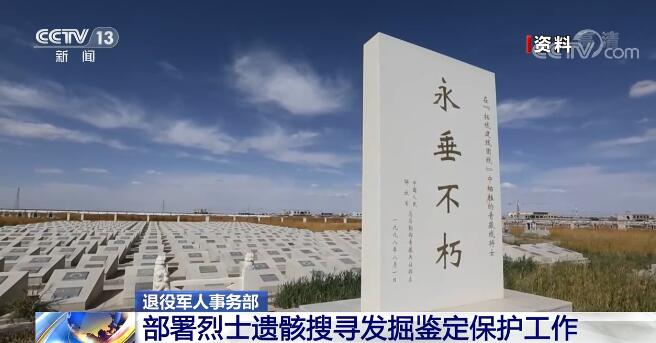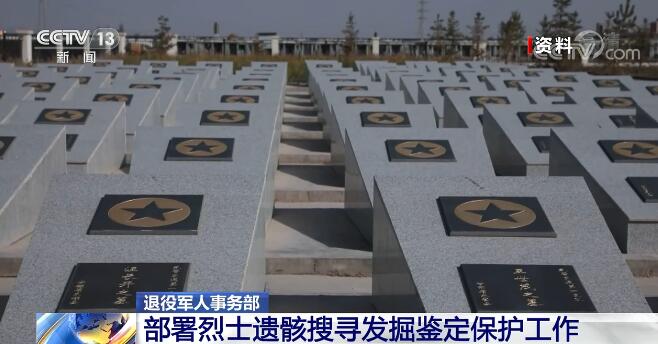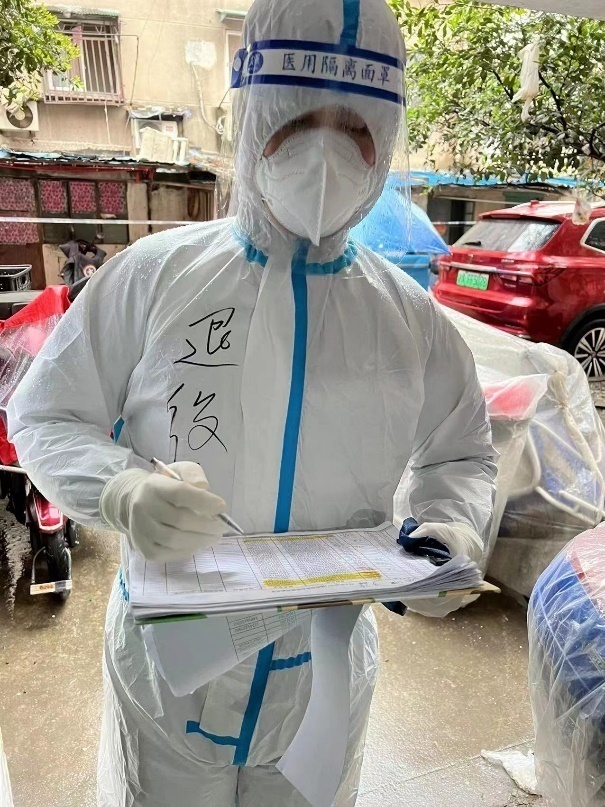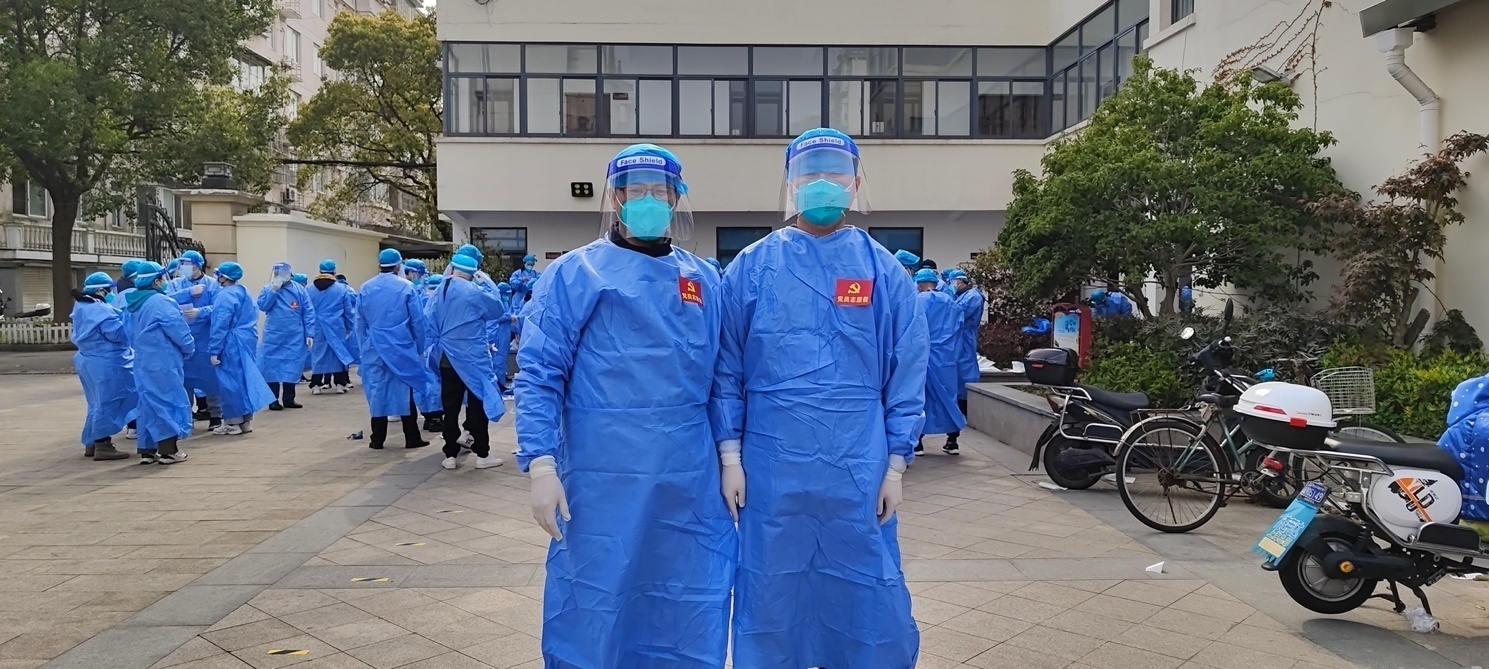[Four-wheel drive details] In the last issue of the four-wheel drive series, we introduced various types of four-wheel drives and their classification (click to view the basic knowledge of four-wheel drive). In the following articles, we will analyze and test the four-wheel drive models of various brands one by one, and the first article we introduce brands to you, including,,, and so on.
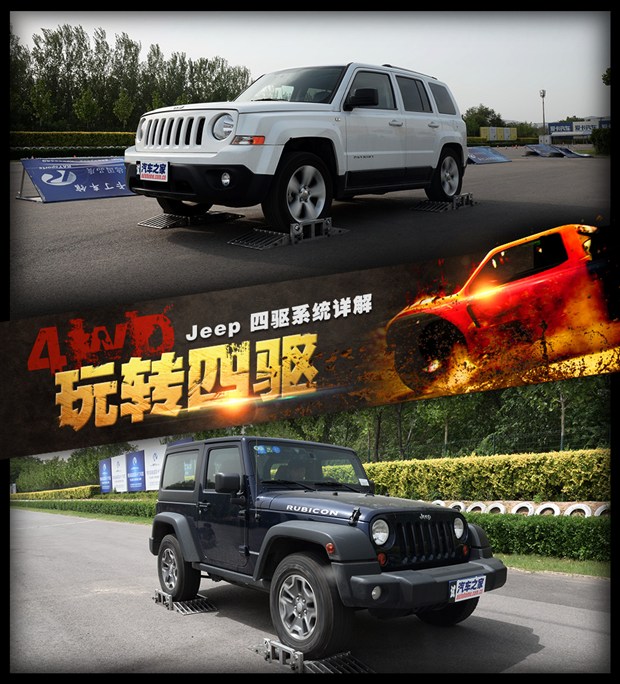
● Jeep brand introduction
The first Jeep in the world was produced in 1941 to meet the requirements of the US military in World War II. It has a history of 73 years. From July 23, 1941 to now, Jeep brand has always insisted on only making SUV models, and left a tough guy image in people’s minds. Today, the Jeep brand has even become synonymous with off-road. It is precisely because of this that Jeep cars have been sold to nearly 100 countries and have many Jeep enthusiasts around the world.
● Jeep origin
Jeep was born out of the Willys)MB model used by the Allied Forces during World War II. In 1940, the U.S. military established the model scheme of Willys MA, and at the same time, borrowed some characteristics of Ford and Bantam, and redesigned the Willys MB off-road vehicle, which made this earliest standardized "Jeep" car.
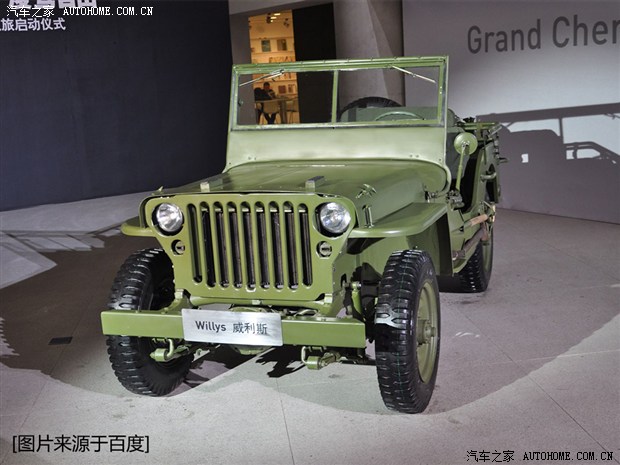
Once Jeep is used, it has made great achievements. Jeep has played many roles in various war zones: stretcher, machine gun rack, reconnaissance vehicle, light truck, front-line vehicle, gun and ammunition transportation, etc. During the Second World War, about 600,000 Jeeps joined the battle. The name of "Battlefield Taxi" confirmed the success of Jeep products.
Since then, Jeep has entered the era of peace with its innate excellent characteristics, and it has become more and more perfect after repeated improvements. Of course, it has kept its original passion and wildness to this day and become one of the automobile brands. The Jeep trademark registered in 1950 has remained vigorous for more than 60 years.
● Domestic Jeep models for sale and
At present, Jeep brands on sale in China mainly include many models, such as Guide, Freerider, Freelight, Grand Cherokee, herdsman, etc. Different product positioning of each model makes their four-wheel drive system forms different. See the table below for specific classification:
| Jeep models on sale and four-wheel drive structure |
| car make and model |
Four-wheel drive system name |
Four-wheel drive structure type |
| Guide |
Freedom-Drive |
|
| Free guest |
Freedom-Drive |
Timely four-wheel drive |
| Free light |
Active Drive |
Timely four-wheel drive |
| Grand Cherokee |
Quadra-Trac Ⅱ |
|
| Herdsman Sahara |
|
|
| Herdsman Rubicon |
|
part time 4wd |
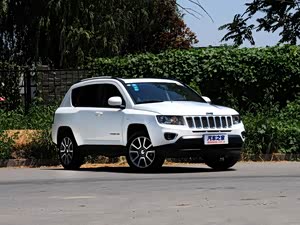
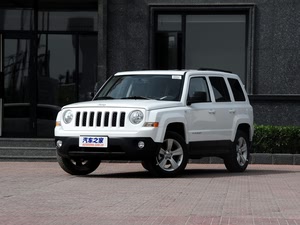
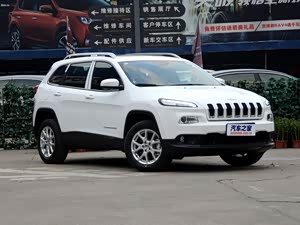
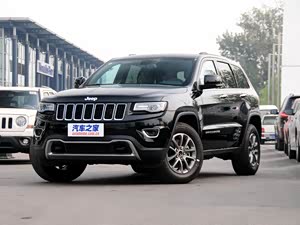


● Test props/test rules
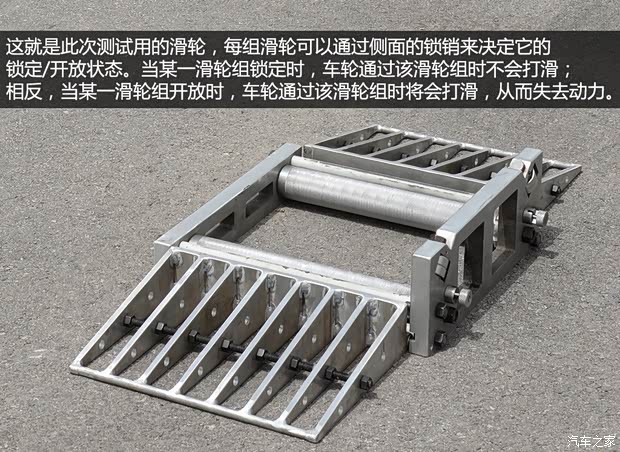
Let’s get to know the pulley block and test rules we used in this test. This pulley block consists of three groups of flat pulleys, and each group of pulleys can determine its locked/opened state through the side locking pin. When a pulley block is locked, the wheels will not slip when passing through the pulley block; On the contrary, when a pulley block is open, the wheels will slip when passing through the pulley block, thus losing power.
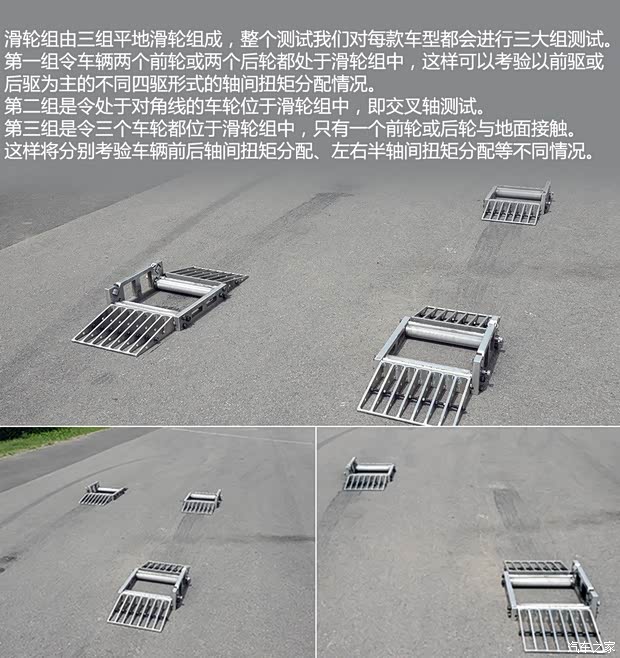
We will test each model in three groups. In the first group, two front wheels or two rear wheels of the vehicle are in the pulley block, which can test the inter-axle distribution of different four-wheel drive forms with front drive or rear drive as the mainstay. The second set of tests is to make the diagonal wheel in the pulley block, and the third set is to make all three wheels in the pulley block, and only one front wheel or rear wheel is in contact with the ground. This will test the torque distribution between the front and rear axles of the vehicle and the torque distribution between the left and right respectively.
Fortunately, after the actual test, the above cars can easily complete the first and second sets of tests, so next we will directly show you their performance in the face of three sets of open pulleys.
● Introduction to the structure of four-wheel drive for guide and freelancer
Guide and freelancer are two types of Jeep. Strictly speaking, the two cars are only different in appearance and interior design, while the power system and four-wheel drive structure are exactly the same.


"guide" and "free guest"
Guides and freelancers are equipped with a four-wheel drive system called "Freedom-Drive". The four-wheel drive system is simple in structure, with an open differential at the front and rear, and a common electrically controlled multi-plate structure. In extreme cases, the power distribution between the front and rear axles can be locked at 50:50. In addition, the electronic auxiliary system can help the vehicle realize the power distribution between the left and right wheels by braking.
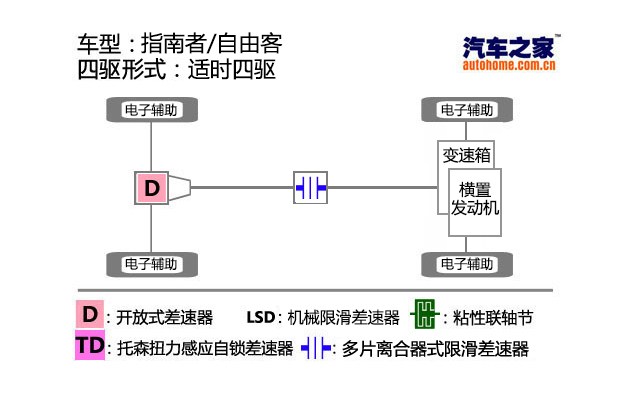
● Guide and Freelancer Four-wheel Drive Operation Keys
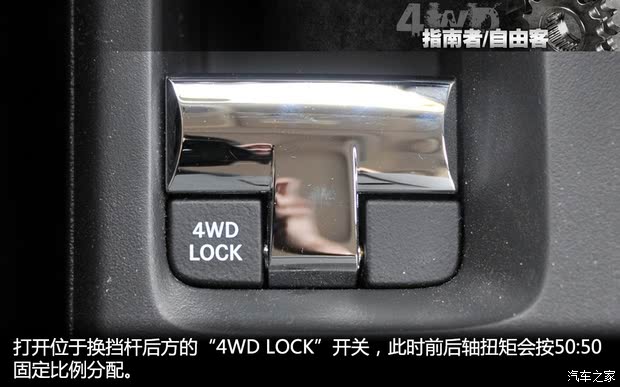
For urban SUVs, such as guides and freelancers, which adopt timely four-wheel drive system, there is no need for manual operation during daily driving, and the computer will automatically distribute the front and rear wheel power according to the driving road conditions. In case of complicated road conditions, the driver can manually turn on the "LOCK" switch, and the torque of the front and rear axles will be distributed at a fixed ratio of 50:50.
● Guide and Freelancer Four-wheel Drive Test Performance
Both the Guide and the Freelancer are four-wheel drive systems based on front-wheel drive. Theoretically, the rear wheels can only get 50% of the maximum power. Therefore, facing three groups of open pulleys, the difficulty of passing forward and backward is also different. When only one front wheel touches the ground, it is easier for the vehicle to get out of trouble. When only one rear wheel touches the ground, the vehicle can also pass, but the process is not easy. Because this four-wheel drive structure determines that the power transmitted to the rear axle is only 50% at most, although the electronic auxiliary system can play the role of limiting slip between wheels, the weak power output still makes the vehicle struggle. If "4WD LOCK" is turned on manually, the system will allocate power at 50: 50 by default, and the situation will be slightly improved.
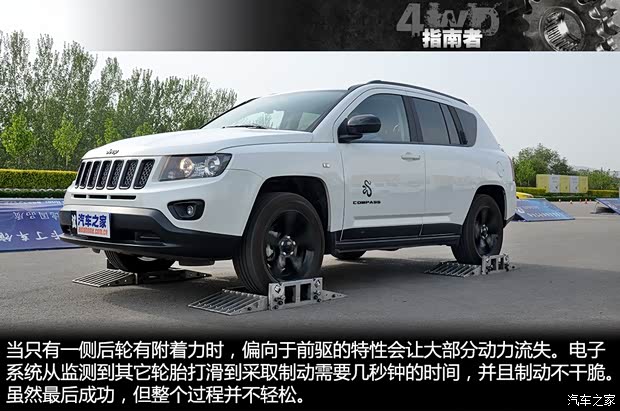
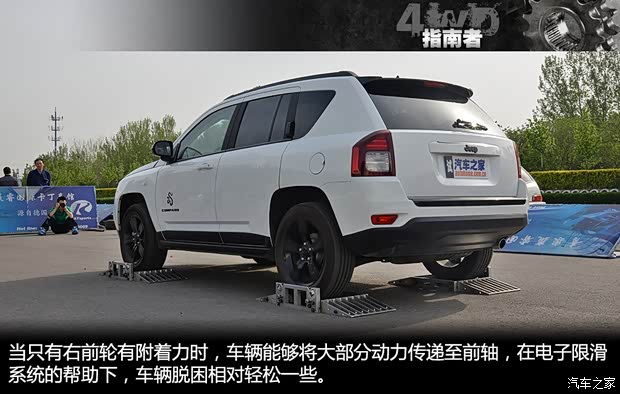
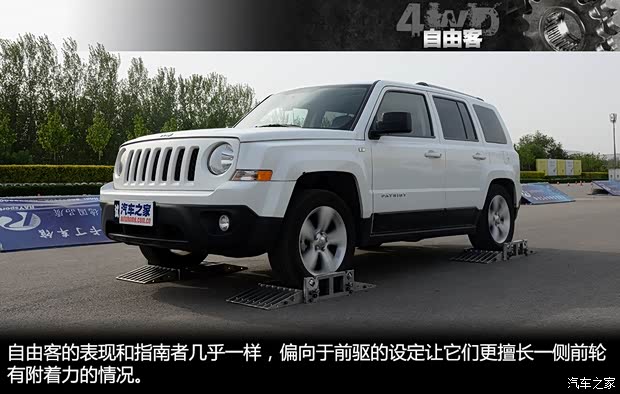
From the four-wheel drive structure and test analysis, although the guide successfully passed the four-wheel drive test, its structure determines that it is not suitable for cross-country. The main function of this four-wheel drive system is to cope with the general potholes and improve the safety of highway driving.
More exciting videos are all on the car home video platform.
More exciting videos are all on the car home video platform.
Advantages:Daily driving is easy, the computer will automatically distribute the front and rear axle power according to the road conditions, without manual control, and the fuel economy is high. At the critical moment, the driver can also manually select the front and rear axle power distribution according to 50:50 to improve the performance of four-wheel drive.
Disadvantages:The power is average, the electronic slip limit between wheels is not crisp enough, and the multi-plate clutch central differential is easy to overheat, so it is not easy to challenge three open pulley blocks.
| Jeep guide/freelancer four-wheel drive test results |
|
Inter-axle power distribution test
(two pulley blocks)
|
Front axle test
(Two rear wheels idling)
|
pass |
Rear axle test
(Two front wheels idling)
|
pass |
|
Dynamic test
|
Diagonal wheel slip
|
pass |
|
Inter-wheel power distribution test
|
Triple pulley block
One rear wheel touches the ground.
|
pass |
Triple pulley block
One front wheel touches the ground.
|
pass |
● Introduction of free light four-wheel drive structure
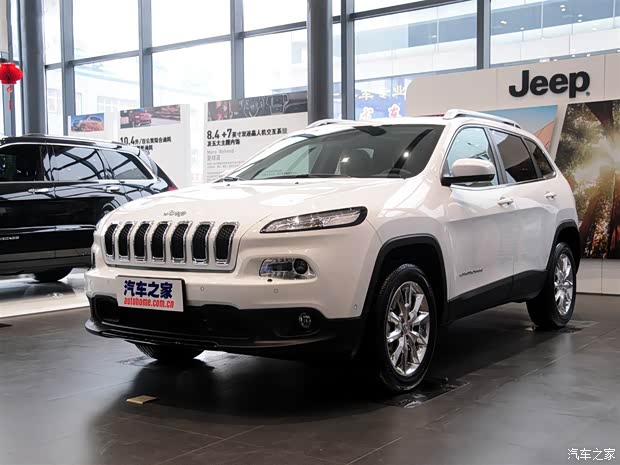
As a brand-new car of the Jeep family, the positioning of Free Light is aimed at luxury brands, and Jeep insists that SUVs at this price should have strong off-road capabilities even if they focus on urban comfort. Free light is an adopted SUV, which adopts a timely four-wheel drive system called "Active Drive". This four-wheel drive system is based on ZF’s "ECOnnect" four-wheel drive system (click to view ECOnnect), which transmits power to the rear axle through PTO (front axle power take-off) and multi-disc clutch. Different from most SUVs, the free-light PTO can completely disconnect the rear axle when necessary, and there is no need to rotate at this time (the central transmission shaft of most SUVs with transverse orientation is always rotating), thus improving fuel economy. In addition, its rear axle has a multi-disc clutch structure, and the multi-disc clutch of the low-profile vehicle acts as a central differential, which can control the torque distribution of the front and rear axles.
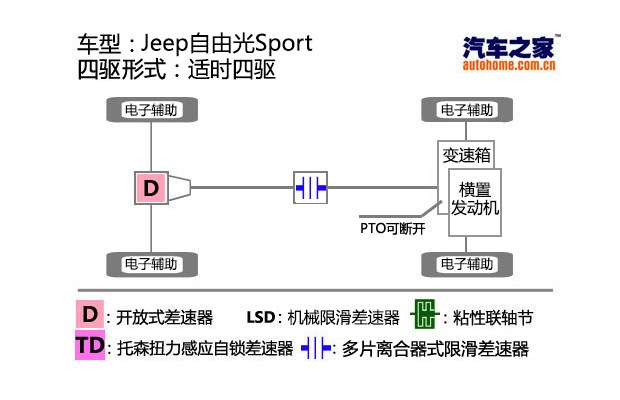
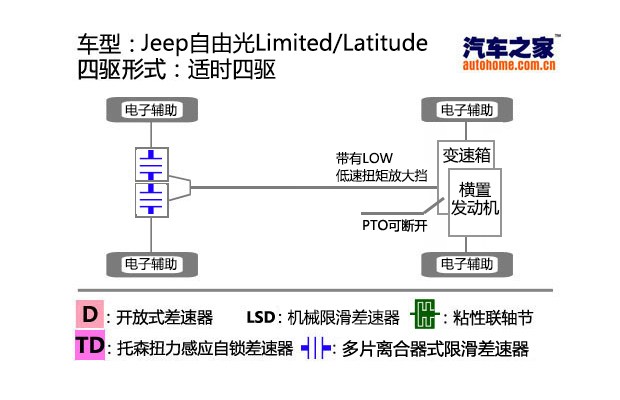
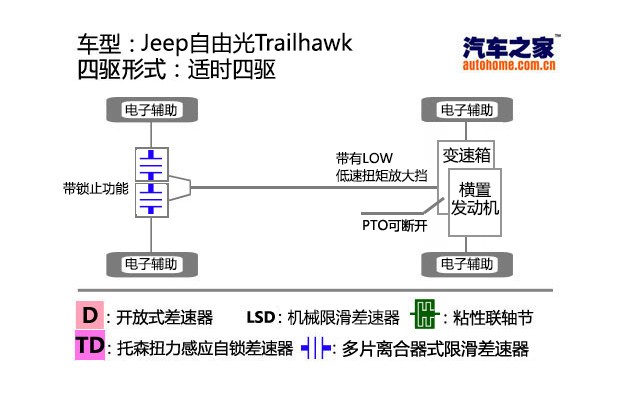
Free light has three different four-wheel drive models, namely Active Drive I, Active Drive II and Active Drive Lock. Among them, the low-profile model adopts Active Drive I timely four-wheel drive system, which is the four-wheel drive structure mentioned in the previous paragraph. Active Drive II can distribute power among rear axle wheels, because its rear axle RDU structure adopts two sets of multi-disc clutches, that is, the left and right axle shafts have one set of multi-disc clutches, and each set of clutches is used to independently control the torque required by the wheels on that side. In addition, the Active Drive II four-wheel drive system also adds a low-speed torque amplification gear with a transmission ratio of 2.92:1. The most powerful Active Drive Lock not only has a low-torque amplification gear, but also has the locking function of the rear axle differential. The driver can manually control the left and right wheels of the rear axle to distribute the torque by 50:50 through the buttons in the car.
● Free optical four-wheel drive operating system
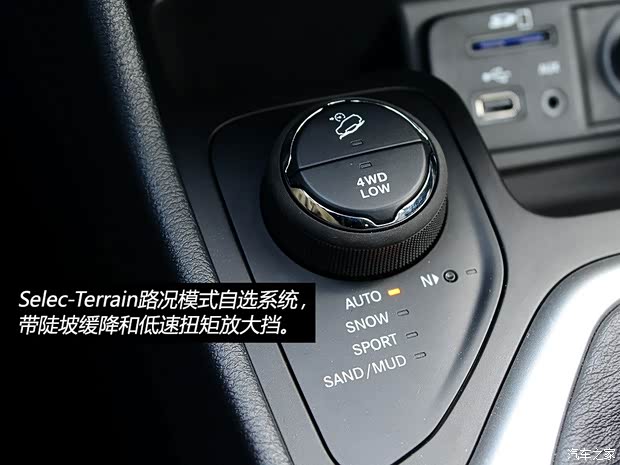
"High-end models have low-speed four-wheel drive function, while low-end models don’t"
In addition, like many high-end SUVs, all models of Free Light also have a road mode self-selection system called "Selec-in". In different modes, the computer will adjust the power response and power distribution to ensure that the vehicle has the best ability to get out of trouble.
● Free light four-wheel drive test performance
Like the guide, the free light adopts a four-wheel drive system based on front wheel drive, so when one front wheel has adhesion, the vehicle is easy to get out of trouble. Then, when passing through three groups of open pulleys in the opposite direction (that is, only one rear wheel has adhesion), does free light struggle to get out of trouble, just like guides and free travelers? Actually, it is not, because the free light not only has electronic limited slip between the left and right wheels, but also the rear axle can distribute the torque through the multi-plate clutch limited slip differential, thus ensuring that the power can be transmitted to the wheels with adhesion more effectively.
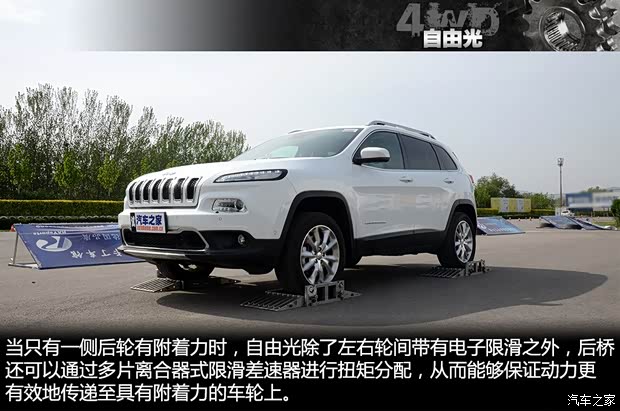
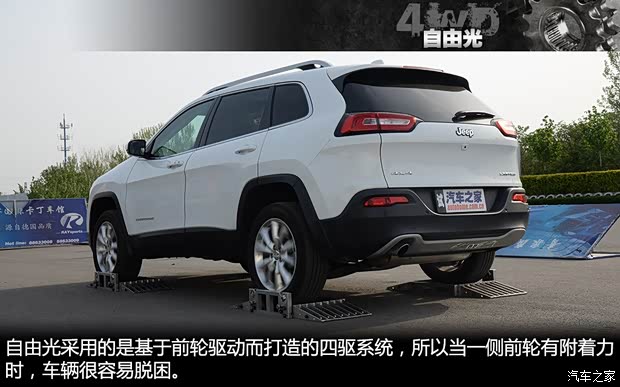
The free light we tested adopts Active Drive II timely four-wheel drive structure, that is, PTO has low-speed torque amplification function. However, during this test, we didn’t turn on the "4WD LOW" low-speed four-wheel drive mode. In the AUTO mode, Free Light can pass the test of three groups of open pulley blocks, and both directions are relatively easy.
More exciting videos are all on the car home video platform.
No matter from the four-wheel drive structure or the actual test results, the Active Drive timely four-wheel drive system on free light is much more powerful than that on the guide, and it can face more complicated road conditions more easily.
Advantages:Daily driving is easy, the computer will automatically distribute the power between the front and rear axle and the left and right axle shafts of the rear axle according to the road conditions, and PTO can also be automatically disconnected when necessary, thus realizing the real front-wheel drive (the central transmission shaft does not turn). The low-speed four-wheel drive and the locking function of the rear axle differential of the mid-high model further improve its four-wheel drive performance.
Disadvantages:Multi-disc clutch limited slip differential is easy to overheat protection after continuous use for many times.
| Jeep free light four-wheel drive test results |
|
Inter-axle power distribution test
(two pulley blocks)
|
Front axle test
(Two rear wheels idling)
|
pass |
Rear axle test
(Two front wheels idling)
|
pass |
|
Cross-axis dynamic test
|
Diagonal wheel slip
|
pass |
|
Inter-wheel power distribution test
|
Triple pulley block
One rear wheel touches the ground.
|
pass |
Triple pulley block
One front wheel touches the ground.
|
pass |
● Introduction of Grand Cherokee Four-wheel Drive Structure
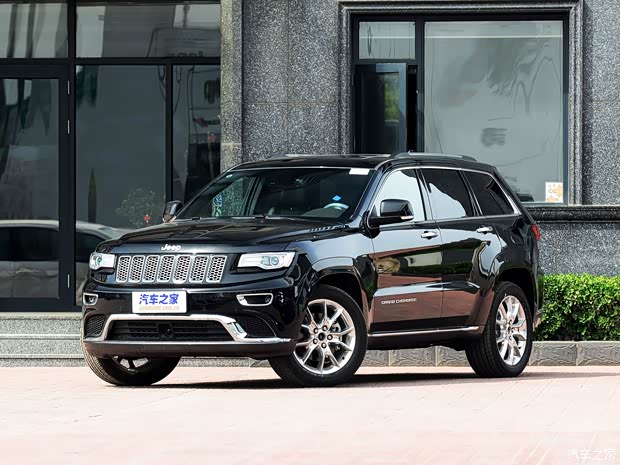
At present, there are two full-time four-wheel drive structures in Grand Cherokee, one is a full-time four-wheel drive system with low-speed four-wheel drive and multi-plate clutch structure; On the other hand, the limited slip differential of the rear axle is added on this basis. The former is applied to 3.0L, 3.6L and 3.0TD diesel models, while the latter is applied to 5.7L models.
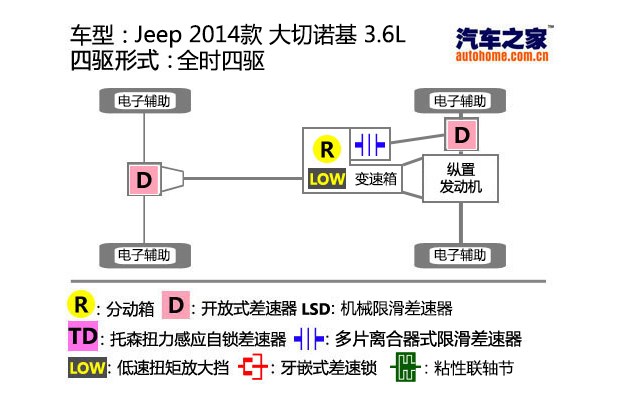
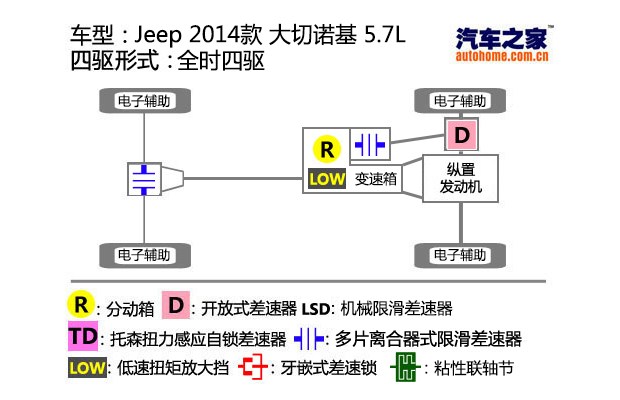
At present, Grand Cherokee provides two different four-wheel drive systems, among which "Quadra-Drive II" on the 5.7L model has a set of ELSD electronic limited-slip differential on the rear axle, so the driver can lock it manually, which is theoretically better in extreme cases.
● Grand Cherokee four-wheel drive operating system
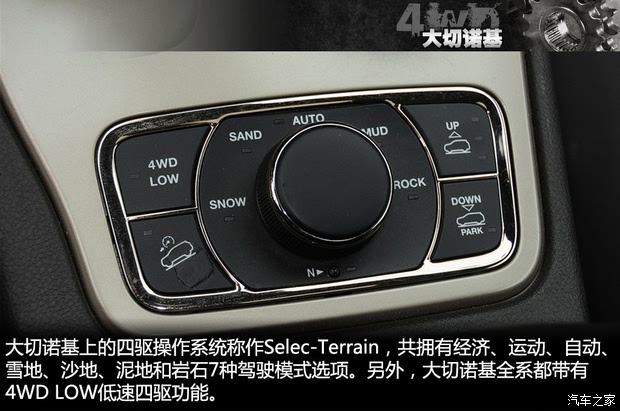
The four-wheel drive operating system on Grand Cherokee is called Selec-Terrain, which has seven driving mode options: economy, sport, auto, snow, sand, mud and rock. In addition, the Grand Cherokee is equipped with 4WD LOW low-speed four-wheel drive function. Compared with Freelight, the operating system of Grand Cherokee not only has more optional modes, but also looks more scientific and technological in its overall interface.
● Grand Cherokee Four-wheel Drive Test Performance
However, for the Grand Cherokee, the whole test process is not easy. The reason is that when passing through three open pulley blocks, the power output will be limited by default. When we tried to close the electronic stability control program, the limited slip function between the left and right wheels was completely lost. At this time, the vehicle could not get out of trouble. Therefore, in order for the four-wheel drive system to work, the electronic stability control system must be turned on by default.
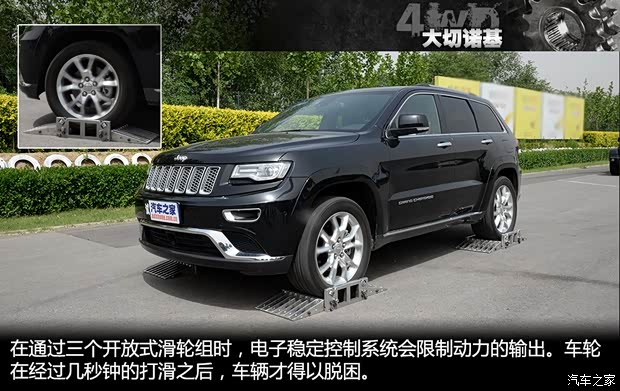
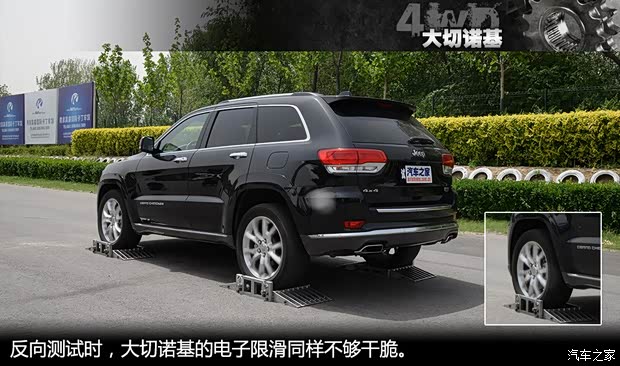
Despite the full-time four-wheel drive system, most SUVs with layout are more inclined to rear-wheel drive, and the Grand Cherokee is no exception. When passing through the pulley block in the opposite direction, its two rear wheels are suspended, and only by the grip of one front wheel can the vehicle get out of trouble. At this time, if the Grand Cherokee wants to get out of trouble successfully, it can only rely on the electronic slip limit between wheels to limit the power output of one wheel, so that the other wheel can have grip. However, due to the restriction of the electronic stability system on the overall power, it is a little difficult for the Grand Cherokee to get out of trouble this time.
However, it should be declared that during the whole test, we did not turn on the 4WD LOW button. In other words, Grand Cherokee completed this test completely in AUTO mode. If the 4WD LOW low-speed four-wheel drive mode is turned on, I believe the whole process will be much easier.
More exciting videos are all on the car home video platform.
Advantages:This system is simple in structure, and the operation mode is intuitive and convenient. Drivers don’t need to remember complicated driving mode switching steps. In most cases, Quadra-Tra II four-wheel drive system can handle it by itself. If necessary, the low-speed four-wheel drive mode can be started to increase the ability to get out of trouble.
Disadvantages:The electronic stability control system has too many restrictions on power, so it is difficult for a single wheel to get enough power to get the vehicle out of trouble.
| Test results of Jeep grand Cherokee four-wheel drive |
|
Inter-axle power distribution test
(two pulley blocks)
|
Front axle test
(Two rear wheels idling)
|
pass |
Rear axle test
(Two front wheels idling)
|
pass |
|
Cross-axis dynamic test
|
Diagonal wheel slip
|
pass |
|
Inter-wheel power distribution test
|
Triple pulley block
One rear wheel touches the ground.
|
pass |
Triple pulley block
One front wheel touches the ground.
|
pass |
● Introduction of herdsman four-wheel drive structure

Herdsman is the most powerful off-road vehicle in Jeep family today, among which Sahara is equipped with Command-Trac part-time 4wd system, which adopts NV241 series transfer case with low gear ratio of 2.72:1, and both front and rear axles are open differential. The part-time 4wd system equipped with Rubicon is called Rock-Trac, and its low-speed gear ratio of the transfer case is 4:1, and the front and rear axles are also equipped with electrically controlled locking Tru-loc. In addition, both cars are equipped with electronic slip-limiting function between E wheels.
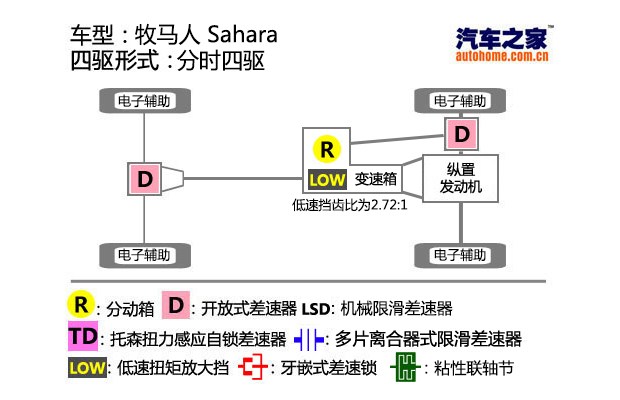
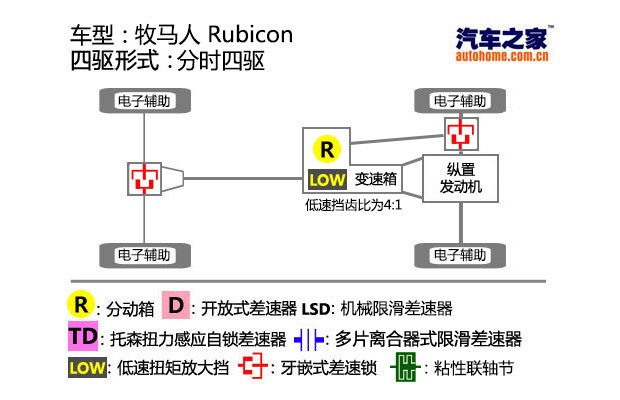
● Herdsman four-wheel drive operating system
Sahara and Rubicon operate the part-time 4wd system in almost the same way, and there is a transfer case lever next to the shift lever. Select the gear position of 2H on the normal paved road, and the vehicle is in the state of rear wheel drive. Select the 4H high-speed four-wheel drive gear on the wet or soft road. At this time, the torque distribution of the front and rear axles is 50:50, and the speed of the front and rear axles is the same. Therefore, it will be very difficult for vehicles to turn on the paved road when the four-wheel drive is turned on. The 4L low-speed four-wheel drive gear is used in the state where high torque traction is needed. The special gear set in the transfer case amplifies the torque and transmits it to the front and rear axles in equal proportion, while the front and rear axles still maintain the same speed.
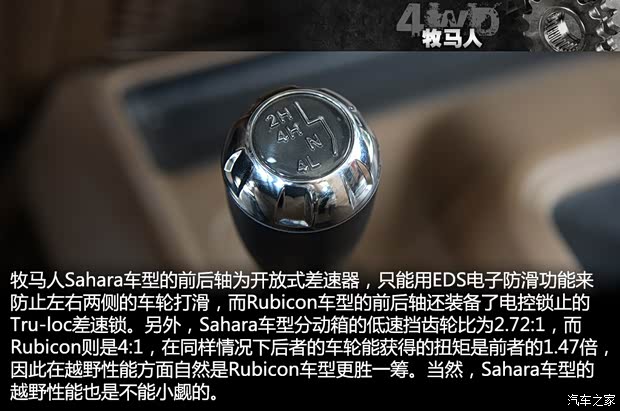
It should be noted that when switching from 2H to 4H, the vehicle speed should be lower than 88km/h.. If you switch to 4L, the speed needs to be lower than 5km/h, and it is better to stop and then put into 4L gear. In addition, the 4L state can only be used in the face of extremely challenging road conditions, when the speed cannot exceed 40 km/h..
Compared with Sahara, Rubicon’s strength lies in the addition of a mechanical differential lock on the front and rear axles. In the face of very harsh environment, it can also ensure that all four tires can get sufficient power.
● Herdsman four-wheel drive test performance
Both Sahara and Rubicon are equipped with electronic slip-limiting function between wheels. Theoretically, as long as the transfer case is selected in the 4H gear, its front and rear axles can get 50% power respectively, and different power outputs of the left and right wheels can be achieved through electronic slip-limiting function between wheels.
In this test, we found two herdsman, one of which is a 3.6L Longteng collector’s edition, which is a five-door model with the same four-wheel drive structure as Sahara. The other one is a 3.6L two-door version of Rubicon, which has two differential locks at the front and rear, and its off-road performance is more powerful.
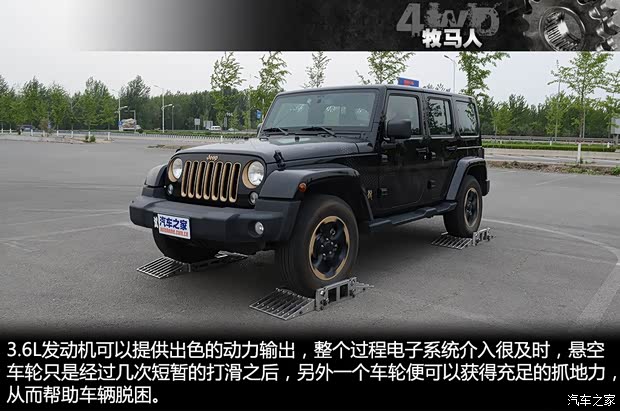
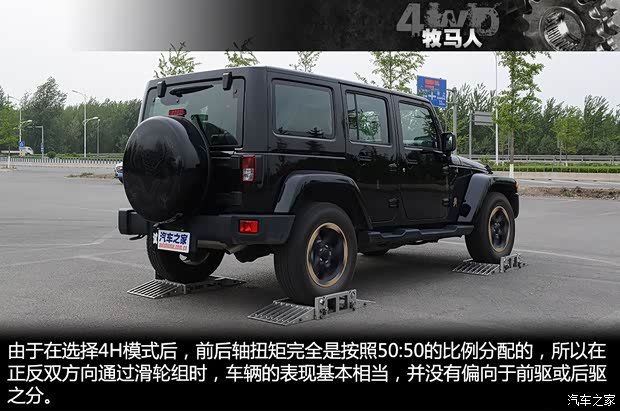
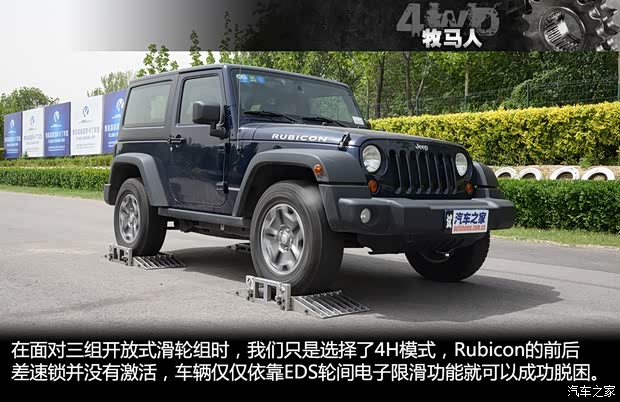
In the face of three groups of open pulley blocks, we only chose the 4H mode, and the front and rear differential locks of Rubicon were not activated. The vehicle can successfully get out of trouble only by relying on the electronic slip-limiting function between EDS wheels. The 3.6L engine can provide excellent power output, and the electronic system is involved in the whole process in time. Only after a few brief slips of the suspended wheel, the other wheel can get sufficient grip, thus helping the vehicle to get out of trouble.
After selecting the 4H mode, the torque of the front and rear axles is completely distributed according to the ratio of 50:50, so when passing through the pulley block in both directions, the performance of the vehicle is basically the same, and there is no bias towards the front drive or the rear drive. Of course, in the conventional 2H mode, herdsman is a rear-wheel drive SUV.
More exciting videos are all on the car home video platform.
More exciting videos are all on the car home video platform.
Advantages:Part-time 4wd system can ensure strong off-road capability, which is the most reliable four-wheel drive structure at present.
Disadvantages:Operation and driving are more complicated than timely four-wheel drive.
| Jeep herdsman four-wheel drive test results |
|
Inter-axle power distribution test
(two pulley blocks)
|
Front axle test
(Two rear wheels idling)
|
pass |
Rear axle test
(Two front wheels idling)
|
pass |
|
Cross-axis dynamic test
|
Diagonal wheel slip
|
pass |
|
Inter-wheel power distribution test
|
Triple pulley block
One rear wheel touches the ground.
|
pass |
Triple pulley block
One front wheel touches the ground.
|
pass |
Full text summary:
Generally speaking, various four-wheel drive structures under the Jeep brand should be regarded as having their own characteristics. In terms of off-road performance alone, herdsman Rubicon’s four-wheel drive system is undoubtedly the most powerful Jeep car. This pure hard-core off-road vehicle can be easily conquered in the face of many off-road projects and difficult road conditions, but there is no absolute perfection in the world. No matter Rubicon or Sahara, their driving experience on the road is not excellent, but this will not affect the love of those who pursue pure off-road at all.
In terms of comprehensive performance, Grand Cherokee and Freelight are both good, and although they are slightly inferior to herdsman in off-road performance, there is no problem in coping with common off-road conditions. More importantly, they have a good performance in road driving comfort, which is very suitable for friends who like off-road style and want to meet the daily road driving comfort.
Compared with the same SUV, the guides and freelancers are also excellent in off-road performance. However, after all, these two cars are SUVs oriented to ordinary consumers and located in cities. Road driving comfort and cost performance are the most important. (Text/Figure car home Zhang Ziyi)
